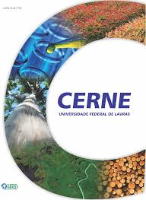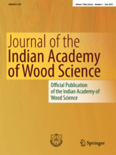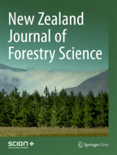
Drvna Industrija
Scope & Guideline
Advancing Knowledge in Forestry and Wood Sciences
Introduction
Aims and Scopes
- Wood Material Properties:
Research on the physical and mechanical properties of various wood species and wood-based materials, including studies on treatments and modifications to enhance performance. - Sustainable Practices in Wood Industry:
Exploration of sustainable practices and technologies in the forestry and wood industries, including the use of bio-based materials and eco-friendly processes. - Engineering and Structural Applications:
Focus on the engineering aspects of wood, including structural design, strength grading, and the performance of wood in construction and furniture applications. - Innovations in Wood Processing Technologies:
Investigation into advancements in wood processing techniques, including CNC machining, 3D printing, and the impact of various treatment methods on wood characteristics. - Environmental Impact Assessments:
Studies assessing the environmental impact of wood products and processes, including life cycle assessments and evaluations of wood preservation methods.
Trending and Emerging
- Sustainable Material Development:
Growing research on sustainable materials, including bio-based composites and eco-friendly treatments, highlights the industry's shift towards greener practices. - Advanced Characterization Techniques:
Emerging focus on advanced characterization methods, such as artificial intelligence and machine learning, to predict and enhance wood properties and processing outcomes. - 3D Printing and Additive Manufacturing:
Increasing interest in 3D printing technologies for wood and wood-based materials, showcasing innovations in design and manufacturing processes. - Nanotechnology in Wood Science:
Exploration of nanotechnology applications in enhancing the properties of wood-based materials, indicating a trend towards high-performance engineered wood products. - Health and Wellbeing Aspects of Wood Use:
Research addressing the psychological and health benefits of wood in interior spaces is gaining traction, reflecting a broader societal interest in wellbeing and environmental psychology.
Declining or Waning
- Traditional Wood Preservation Methods:
Research on conventional wood preservation techniques is decreasing, likely due to the growing emphasis on environmentally friendly and sustainable alternatives. - Basic Wood Anatomy Studies:
Basic anatomical studies of wood are becoming less prominent, possibly overshadowed by more applied research on material properties and performance. - Historical Wood Use and Cultural Studies:
Research focusing on historical aspects and cultural significance of wood use appears to be waning, as the journal shifts towards more technical and scientific inquiries. - Non-Engineering Applications of Wood:
Topics related to non-engineering applications of wood, such as art and crafts, have seen reduced publication frequency, reflecting a trend towards more industrial and scientific applications.
Similar Journals

REVISTA ARVORE
Sowing Seeds of Knowledge in Environmental SustainabilityREVISTA ARVORE is a distinguished, peer-reviewed journal in the field of Forestry, published by Universidade Federal de Viçosa in Brazil. Renowned for its commitment to open access since 2002, this journal facilitates the dissemination of innovative research and knowledge to a global audience, encompassing topics from sustainable forest management to ecological conservation. With an impact factor reflective of its engagement in the community and a current Scopus ranking that places it in the 28th percentile among journals in Agricultural and Biological Sciences, it provides a vital platform for both emerging and established scholars. The journal is indexed under ISSN 0100-6762 and E-ISSN 1806-9088, making it accessible to a wide readership. As it converges its publication years from 2006 to 2024, REVISTA ARVORE aims to contribute significantly to the advancement of forestry science and practices, thereby encouraging environmental sustainability and innovation within the field.

CANADIAN JOURNAL OF FOREST RESEARCH
Connecting researchers to the heart of forest science.Canadian Journal of Forest Research (ISSN: 0045-5067, E-ISSN: 1208-6037), published by Canadian Science Publishing, stands as a leading platform for disseminating cutting-edge research in the field of forestry and ecological sciences. With an impressive impact factor and a steady reputation for high-quality publications, this journal occupies a prestigious position indicated by its Q1 ranking in Forestry and Q2 in Ecology as of 2023, alongside commendable placements in global and planetary change studies. Covering a broad scope from sustainable forest management to the impacts of climate change on forest ecosystems, the journal encourages submissions that address contemporary challenges and innovations in forest research. Operating from its base in Ottawa, Canada, the Canadian Journal of Forest Research has been a cornerstone of academic discourse since 1974, offering researchers and professionals vital access to pioneering studies that inform policy and practice in forestry. Researchers, educators, and students alike will find this journal an indispensable resource for advancing knowledge and fostering collaboration in the vital realm of forest research.

Cerne
Illuminating Pathways to Sustainable Forest ManagementCerne is a distinguished open-access journal dedicated to advancing knowledge in the field of forestry, published by the Universidade Federal de Lavras (UFLA). Since its inception in 1994, the journal has actively contributed to the global discourse on sustainable forest management and biodiversity conservation, presenting research findings that are both relevant and impactful. With its ISSN 0104-7760, Cerne aims to foster collaboration among researchers, professionals, and students, enhancing the understanding of forestry practices in Brazil and beyond. As of 2023, it holds a respectable Q3 ranking in the forestry category, further cementing its position within the academic community, illustrated by a Scopus ranking of #97 out of 174 in the Agricultural and Biological Sciences - Forestry field. Operating under an open-access model allows for wide dissemination of research outputs, ensuring that critical findings reach a broad audience, fueling further innovation and discovery in the field. With converged years extending from 2007 to 2024, Cerne continues to be a vital resource for anyone engaged in forestry research and practices.

Journal of the Indian Academy of Wood Science
Innovating Research for a Greener TomorrowJournal of the Indian Academy of Wood Science, published by Springer India, is a vital resource for scholars and practitioners in the fields of Biomaterials, Forestry, and Plant Science. With an ISSN of 0972-172X and an E-ISSN of 0976-8432, this journal has evolved since its inception in 2010 and continues to contribute significantly to the academic discourse until 2024. Notably indexed in Scopus, it holds respectable quartile rankings, including Q3 in Forestry and Q4 in both Biomaterials and Plant Science for 2023, indicating its niche yet impactful presence in the academic community. The journal aims to disseminate cutting-edge research, innovative methodologies, and practical applications regarding wood science and related fields. Researchers, professionals, and students are encouraged to engage with a plethora of studies that enhance the understanding and utilization of wood as a sustainable resource, making this journal an essential addition to their libraries.

FOREST PRODUCTS JOURNAL
Advancing knowledge in forestry and sustainable practices.FOREST PRODUCTS JOURNAL is a prestigious publication dedicated to the advancement of knowledge in the field of forestry and forest products. Published by the Forest Products Society, this journal has established itself as a significant resource since its inception in 1968, offering valuable insights into the scientific, engineering, and technological aspects of wood products. With a commendable impact factor and categorized as Q2 in Forestry and Q3 in both Materials Science and Plant Science, it serves as an essential platform for researchers, professionals, and students alike. The journal's comprehensive scope covers topics from sustainable forestry practices to innovative material applications and forest management strategies, addressing critical challenges faced in the industry. Although it is not an Open Access journal, interested readers can access its contents through numerous academic databases, ensuring widespread availability to foster collaboration and advancement in forest-related sciences. The FOREST PRODUCTS JOURNAL is not only crucial for knowledge dissemination but also for promoting the sustainability and conservation of forest resources globally.

NEW ZEALAND JOURNAL OF FORESTRY SCIENCE
Empowering Knowledge for a Greener TomorrowNEW ZEALAND JOURNAL OF FORESTRY SCIENCE (ISSN: 0048-0134; E-ISSN: 1179-5395), published by SCION, stands as a pivotal resource for researchers, professionals, and students dedicated to the fields of forestry, ecology, and plant sciences. With a strong commitment to open access since 2013, the journal promotes the dissemination of high-quality research and innovative practices within these disciplines, thereby fostering a greater understanding of the natural environment. The journal has achieved commendable rankings, being placed in the Q2 category in Ecology, Forestry, and Plant Science, reflecting its significant contribution to advancing knowledge and best practices in these areas. Based in Switzerland and published by SCION, a trusted name in forest research, the journal plays an integral role in shaping the dialogue around sustainable forest management and ecological conservation. As such, it serves as an essential platform for scholarly discourse and a valuable resource for anyone engaged in forestry and environmental studies.

Acta Facultatis Xylologiae Zvolen
Unveiling contemporary trends in forestry research.Acta Facultatis Xylologiae Zvolen, an esteemed journal published by TECHNICKA UNIV ZVOLENE, serves as a pivotal platform for the dissemination of research within the field of Forestry. With an ISSN of 1336-3824, this journal has been consistently delivering scholarly articles since its inception in 2007. It is recognized in Scopus, placing it in the Q3 category among its peers in Agricultural and Biological Sciences, specifically in Forestry, wherein it ranks #80 out of 174 with a 54th percentile. Although currently not open access, it provides critical insights and high-quality research that are invaluable for professionals, researchers, and students engaged in forestry and related disciplines. Readers can expect to find articles that delve into contemporary issues, innovative methods, and emerging trends within the field, making it an essential resource for anyone devoted to advancing the science of forestry.

Scientia Forestalis
Innovating research to shape the future of forestry.Scientia Forestalis is a prominent academic journal dedicated to advancing the field of forestry and environmental studies. Established in 1996 and published by the Instituto de Pesquisa e Estudos Florestais (IPEF) in Brazil, this journal provides a critical platform for researchers and practitioners to disseminate innovative studies and findings in forestry. With an HIndex reflective of its academic impact and ranking in the third quartile of forestry journals, Scientia Forestalis is positioned to cater to a diverse audience, including scholars, professionals, and students engaged in agricultural and biological sciences. Despite its non-open access model, the journal maintains a commitment to high-quality research that fosters an understanding of forest ecosystems and sustainable practices. Published articles span a wide range of topics, ensuring that crucial developments in forestry science are captured and shared. The journal's current Scopus rank places it within the 26th percentile, affirming its role in shaping forestry research in a global context, making it an essential resource for anyone interested in this vital field.

BOIS ET FORETS DES TROPIQUES
Cultivating Understanding of Tropical EcosystemsBOIS ET FORETS DES TROPIQUES is a distinguished journal published by CIRAD-CENTRE COOPERATION INT RECHERCHE AGRONOMIQUE POUR, based in France. The journal is committed to disseminating high-quality research in the domains of ecology, forestry, and environmental science, reflected by its impressive ranking in multiple Scopus categories, including Q2 in Forestry and Q3 in Ecology. With an ISSN of 0006-579X and an e-ISSN of 1777-5760, BOIS ET FORETS DES TROPIQUES serves as a vital platform for scholars and practitioners to explore and share insights about tropical forests and their ecosystems. Although it operates under a subscription model without open access options, the journal plays a crucial role in advancing research and practices essential for sustainable forest management and biodiversity conservation in tropical regions. Its ongoing publication from 2010 to 2024 ensures a continuous contribution to the academic community, fostering a deeper understanding of ecological dynamics and promoting innovative approaches within the field.

WOOD SCIENCE AND TECHNOLOGY
Exploring Innovations in Forestry and Materials ScienceWOOD SCIENCE AND TECHNOLOGY, published by SPRINGER, is a premier academic journal dedicated to the multidisciplinary study of wood and its applications. With a rich history spanning since its inception in 1967 and continuing through 2024, this journal plays a vital role in advancing our understanding of forestry, industrial and manufacturing engineering, and materials science. It enjoys an impressive categorization in the 2023 rankings, securing a Q1 status in Forestry and notable Q2 rankings in Industrial and Manufacturing Engineering, Materials Science, and Plant Science. Researchers and professionals benefit from its rigorous peer-reviewed articles, making substantial contributions to the field. The journal is actively indexed, ensuring high visibility and access to its content, which is essential for anyone looking to stay at the forefront of wood science research. The current impact factors and rankings affirm its significance, making it a critical resource for academics seeking to foster innovation and collaboration in wood technology and related disciplines.